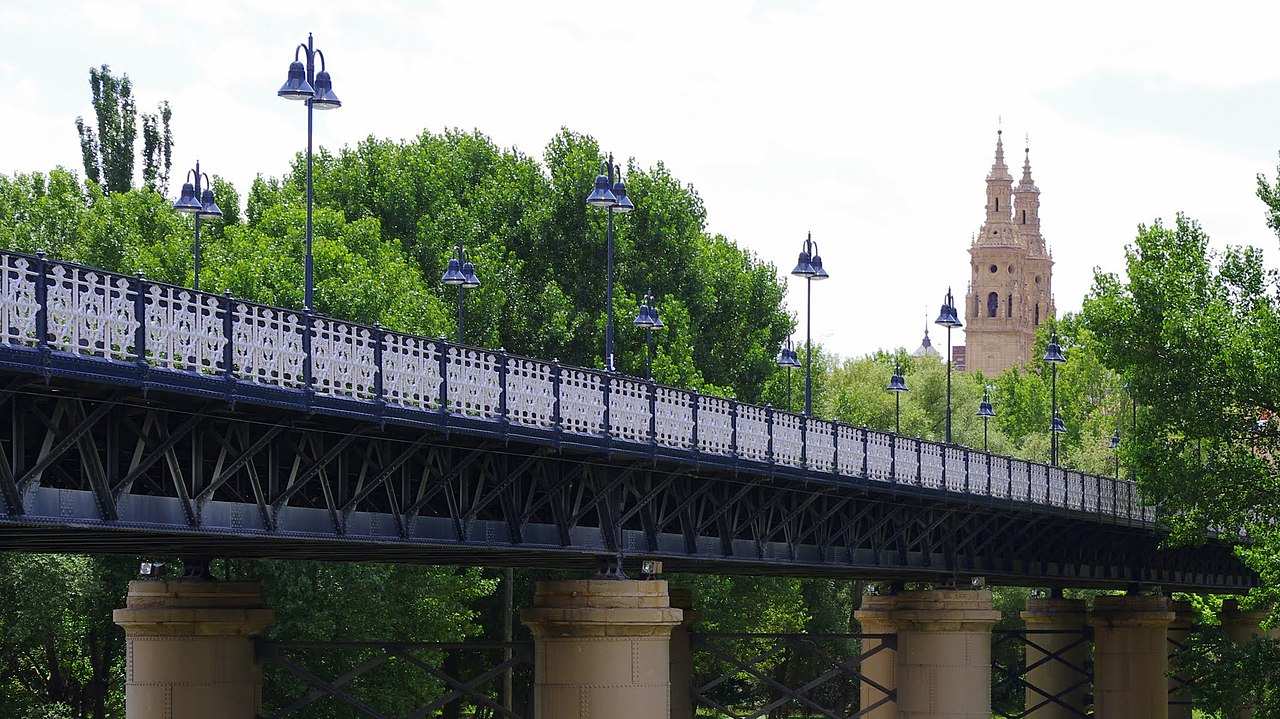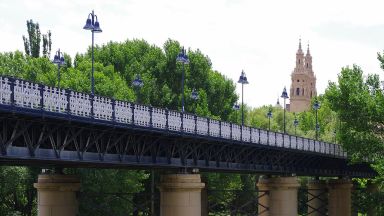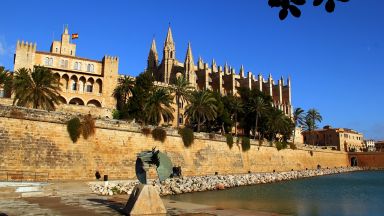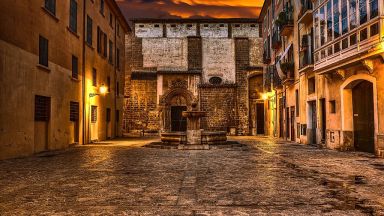Walking Tour of Logroño
This website uses affiliate links which earn a small commission at no additional cost to you.
Logroño is a very pleasant city to explore on foot. It is a compact city which sticks that balance between traditional and modern; between the old buildings of yesteryear and the new buildings; such as the Old Town, and the new neighbourhoods.
La Redonda
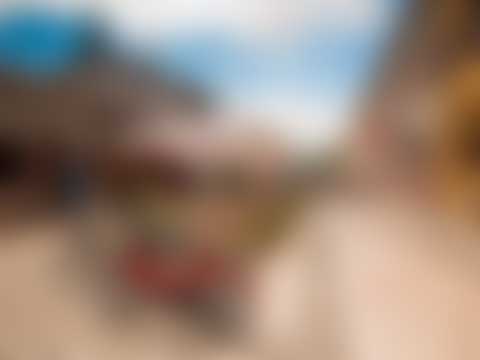
The Concatedral de Santa María de la Redonda is a magnificent cathedral that was built in the 15th century and reformed until 18th century. It is a magnificent church that clearly traces the history of the place through the building architecture and intricate workmanship.
Location: Catedral de Santa María de la Redonda, Calle Portales, 14, Logroño, La Rioja, Spain
Read more about Catedral de Santa María de la Redonda
Go Shopping in the Old Town

Portales Street and the Market Square are the symbol of a city with an enormous commercial tradition – it was once known as calle de la Herventía (boiling place).
Today, Portales Street – renamed after the arcades built in the 19th century – offers an attractive pedestrian walkway between traditional and modern shops, cafés and restaurants. The
historic commercial character of the city is confirmed by the name of some of the streets of the Old Town, “carnicerias”(butchers), “caballerias” (horses), “herrerias” (ironworks) and “ollerias” (pottery).
Read more about Old Logroño City Hall (Plaza del Mercado)
San Bartolomé Church

San Bartolomé Church is the oldest in Logroño. Built with ashlar stone and Roman and gotic architecture from 12th Century this is a stunning building. It’s part of the Camino de Santiago. To be especially highlighted is the carefully carved Gothic doorway. Its Tower was part of the city’s defensive system, part of the walls that were extended as the town centre grew. Thus, the first two sections of the tower are of ashlar like the Church and the wall, and the next two are of stone decorated with small Mozarabic tiles.
Location: Church of San Bartolomé, Plaza de San Bartolomé, 2, Logroño, La Rioja, Spain,
Read more about Iglesia de San Bartolomé
People watch at Parque del Espolon

Walk through the Parque del Espolon, which is located in the centre of the city. The statue of General Espartero is also located in the park, so don’t forget to head over to snap a photo.
If visiting in mid-September, the Festa de San Mateo, Rioja’s wine festival, where the process of traditional winemaking is exhibited is held here.
Location: Parque del Espolón, Calle Miguel Villanueva, Logroño, La Rioja, Spain | Hours: 24 Hours | Price: Free
Read more about Parque del Espolón
Go Pintxo bar hopping at Calle Del Laurel

Lognoro is full of bustling streets that are filled with bars selling local food delicacies and wines – each bar specialises in just two or three dishes.
Concentrated around Calle Laurel it can get busy at night between 7 pm to 1 am. Alternatively, head to Calle San Juan, if you’re looking for a street that is less crowded and touristy.
Hemingway has eaten here while on his Iberian travels, and King Juan Carlos has given them his royal seal of approval.
Location: Calle del Laurel, Logroño, Spain
Read more about Pintxos at Calle Laurel
Experience the local culture & history at Museo de la Rioja

Just a few streets away from Calle Del Laurel, lies the Museo de la Rioja. This intriguing and charming museum is housed in a the Espartero Palace, an 18th-century baroque building. The museum covers the history of Rioja through the stone age to the 19th century.
Location: Museo de La Rioja Calle San Agustín, 23 26001 Logroño La Rioja Spain | Hours: Sun: 10am - 2pm; Tue - Sat: 10am - 2pm, 4pm - 9pm (closed on Mon) | Website
Read more about Museo de la Rioja
Fabrica de Tabacos

Look out for the yellow building and the tower next to it. Fabrica de Tabacos or Tobbaco Factory is a historic building located in city center. Over the years the building has changed from a old convent, a tobacco factory to the regional parliament
| Hours: Parliament of La Rioja C. Marqués de San Nicolás, 111 26001 Logroño La Rioja Spain
Read more about Fabrica de Tabacos, Logroño
Walk through Puerta del Camino at the Cubo de Revellin

El Cubo del Revellín is an artillery cube located in the Old Town of Logroño, which was built between 1522 and 1524. Currently of its original structure only a few remains remain, part of these correspond to the parameters of the wall along the front of the Ebro River.
You can visit its interior and walk through its wall and watch educational videos about the building.
Read more about Muralla del Revellín
Cross the Ebro River on an Iron Bridge

Cross over the Ebro River on Logroño’s oldest bridge.
Location: Puente de Hierro 26001 Logroño La Rioja Spain | Hours: 24 Hours | Price: Free
Read more about Puente de Hierro, Logroño
Visit the House of Science

Casa de las Ciencias is dedicated to the dissemination of culture, science and technology. It has permanent exhibits that focus on universal topics of science such as large species that lives in the water and the history of the geological transformation of the Earth. Located in the stunning old municipal slaughterhouse, on the north bank of the river Ebro, between the Iron and Stone bridges.
Location: Calle del Ebro, 1, 26009 Logroño, La Rioja, Spain | Hours: Winter hours: Tuesday to Friday: from 9:30 a.m. to 1:30 p.m. and from 5:00 p.m. to 7:30 p.m. Saturdays, Sundays and holidays: from 11 am to 2 pm and from 5 pm to 8:30 pm. Every Monday and January 1 and 6 and December 25: closed.Summer Hours: (July and August) From Tuesday to Sunday, from 11 a.m. to 2 p.m. and from 5 p.m. to 8:30 p.m. Every Monday: closed. | Price: Free | Website
Read more about Casa de las Ciencias Logroño
Cross the Bridge of Lions!

Located on River Ebro, this bridge is one of the four bridges at the river that passes through the Rioja Capital. Puente de Piedra (Stone Bridge) also known as the Bridge of Lions is one of the iconic symbols of Logroño that was built is 1884. The bridge also leads to the entrance to the city along Camino de Santiago.
Location: Puente de Piedra, Logroño, Spain | Hours: 24 Hours | Price: Free
Read more about Puente de Piedra
This website uses affiliate links which earn a small commission at no additional cost to you.
